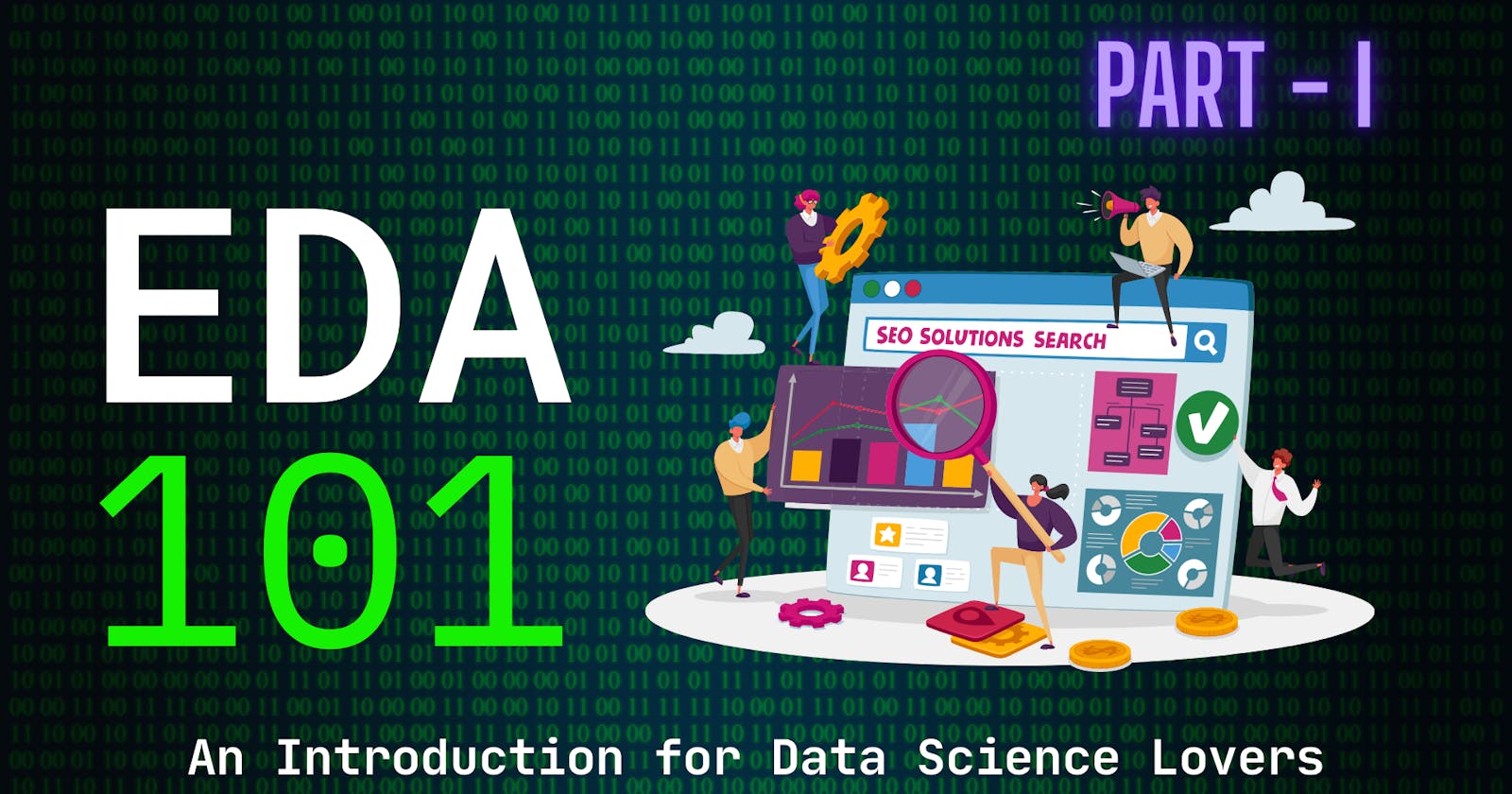This blog is the first of a five-part series that aims to introduce you to the basics of EDA.
Things we are going to look into in this series:
I. Introduction to Exploratory Data Analysis (EDA)
II. Methods of Exploratory Data Analysis
III. Understanding the Dataset
IV. Data Cleaning and Preprocessing
V. Data Visualization
VII. Conclusion
Through this series, you will learn about the importance of EDA, the different methods used for data exploration, and how to implement these methods in practice. By the end of this series, you will have a solid understanding of EDA and be able to apply these techniques to your own projects.
So, whether you are a beginner or have some experience with data science, this blog series is perfect for you. Get ready to dive into the world of EDA and unlock the secrets hidden in your data!
So, in this blog you will look into:
I. Introduction to Exploratory Data Analysis (EDA)
A. What is EDA?
B. Why is EDA important in Data Science?
C. Objectives of EDA
I. Introduction to Exploratory Data Analysis (EDA)
Exploratory Data Analysis (EDA) is a crucial step in the data science process that allows you to dive deep into your data and gain valuable insights. It is a flexible, iterative approach to uncovering patterns, relationships, and trends in your data, and is an essential tool for data scientists and analysts alike.
A. What is EDA?
EDA is a method of examining and analyzing data to gain a better understanding of it. The goal of EDA is to extract meaningful insights from the data by using various statistical methods, visualizations, and other techniques. The process involves examining the data in various ways to identify patterns, trends, and anomalies.
B. Why is EDA important in Data Science?
EDA is important in data science because it helps you to understand your data before diving into more advanced techniques. It allows you to identify any potential issues with the data and make informed decisions about the next steps in the analysis process. EDA also helps you to identify any trends or patterns in the data that may not be immediately apparent.
C. Objectives of EDA
The main objectives of EDA are to:
Gain a better understanding of the data :
One of the main objectives of EDA is to gain a better understanding of the data. This includes exploring the data to see what it contains and identifying any patterns or relationships in the data. You can also use EDA to identify any trends in the data, such as the mean, median, or mode.Identify any missing or incorrect data: Another objective of EDA is to identify any missing or incorrect data. This may include identifying missing values or values that are incorrect or inconsistent with the rest of the data. By identifying these problems, you can then take the appropriate steps to correct them.
Identify any outliers or anomalies in the data: EDA also helps you identify any outliers or anomalies in the data. Outliers are values that are significantly different from the rest of the data and can often impact your analysis and modelling results. By identifying outliers, you can then decide whether to remove them or keep them in the data, depending on their impact on the analysis.
Identify patterns, relationships, and trends in the data: Another objective of EDA is to identify patterns, relationships, and trends in the data. This includes identifying relationships between variables, such as the relationship between age and income, and identifying trends in the data, such as the trend of increasing sales over time.
Create meaningful visualizations and summaries of the data: Finally, EDA also involves creating meaningful visualizations and summaries of the data. This includes creating graphs, histograms, and scatter plots to help you better understand the data. By creating these visualizations, you can quickly identify patterns and relationships in the data, as well as identify any outliers or anomalies in the data.
In conclusion, Exploratory Data Analysis (EDA) is an essential tool for data scientists and analysts. It provides a flexible, iterative approach to understanding the data and extracting meaningful insights. By gaining a better understanding of your data, you can make informed decisions about the next steps in your analysis and unlock the full potential of your data.
So, this was the introductory blog, to make you get familiar with what EDA is, and how it is affecting the process of getting more insightful observations from the data. in further parts you’ll be able to dig deeper into the subject. Dont miss out!! if you like this blog and want more of these, Do Follow me now. you can follow me on twitter @lokstwt . to get all the updates regarding these series and get many more interesting content related to Data Science.
Peace!! ✌🏾.

